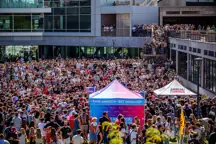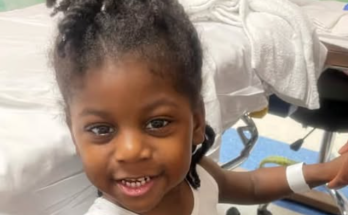Why Did the Crowd Freeze After Charlie Kirk Was Shot? A Forensic Neuropsychologist Explains
In the moments following the fatal shooting of conservative commentator Charlie Kirk at a campus event in Utah, many attendees reacted in a way that some found puzzling. Instead of running, ducking, or screaming, a significant portion of the crowd reportedly stood still — motionless and silent for several seconds.
This seemingly unnatural calm has fueled speculation and conspiracy theories online, with some questioning whether certain people in the audience were complicit or somehow unfazed by the sudden act of violence. However, according to experts in trauma and neuroscience, this type of response is not only expected — it is deeply human.
The Freeze Response: A Hardwired Survival Mechanism
Derek Van Schaik, a forensic neuropsychologist and popular YouTube analyst with over 650,000 subscribers, recently posted a video explaining the science behind what many witnesses experienced. Far from being suspicious, he says the motionless reactions are a well-documented neurological phenomenon known as the “freeze response.”
“When we are in shock from a sudden or unexpected traumatic event, our bodies may freeze because we don’t immediately know what to do in that new, uncertain situation,” Van Schaik explained. “This is a classic survival mechanism that’s wired into our nervous systems.”
The “fight or flight” response is often cited in high-stress situations, but what’s less commonly discussed is the third component: freeze. This occurs when the brain, overwhelmed by sudden danger, momentarily halts action. Evolutionarily, this helped humans avoid detection by predators or process what was happening before making a move.
“In the animal kingdom, freezing can be the difference between life and death,” Van Schaik added. “It’s the brain’s way of saying, ‘Wait — assess before acting.’”

Eyewitness Reactions Reflect Trauma Response
One eyewitness, who spoke anonymously and whose account was included in Van Schaik’s analysis, described the moment the shot rang out during the Utah Valley University event.
“I hear this pop. It sounded like it was close. And out of the corner of my eye, I see Charlie go back. And so I start to head toward Charlie,” the attendee said. “And I see that the security guys are already there. So then I duck, thinking, ‘Okay, maybe there’s other shots coming.’”
The witness was still on the phone with a family member during the event. “My daughter-in-law told me this. These were the first words out of my mouth: ‘No, no, no, no, no.’”
Van Schaik pointed out that this kind of reaction — verbalizing confusion, ducking, freezing — all fall under the umbrella of acute stress responses.
“People are not robots,” he said. “Reactions are not rehearsed or uniform. Under trauma, our brains can either go into high gear or momentarily stall as they try to grasp what’s happening.”
Not Everyone Reacts the Same Way
A major point emphasized by Van Schaik is that trauma affects people differently. While some people may run or drop to the ground instantly, others may appear frozen or unreactive — not because they’re complicit or calm, but because of how their brain processes trauma.
“Some conspiracy theories are built on the idea that if someone didn’t panic, they must have known something or were part of it,” he said. “But the truth is, the freeze response is an automatic survival reaction, not a conscious decision.”
In fact, various factors influence how a person will react in a high-stress situation. These include past trauma, temperament, genetic predispositions, professional background (such as military or medical training), and even neurodiversity.
“Every person’s nervous system is wired slightly differently,” Van Schaik said. “Some people might be more conditioned to respond quickly, while others may experience a delay as their brain tries to make sense of an unfamiliar threat.”
Public Misunderstanding of Trauma Reactions
The online world often demands clear-cut narratives, and unexplained behavior can quickly become fuel for speculation. In the case of the Kirk assassination, social media posts have questioned why the crowd seemed so still — and some have taken that as evidence of prior knowledge or orchestration.
But Van Schaik warns that interpreting trauma responses through a lens of suspicion is both inaccurate and
dangerous.
“Misreading trauma reactions as guilt or involvement is a common and harmful mistake,” he said. “It’s the same reason why, in courtrooms, some survivors of violent crimes are questioned for not screaming or running — when in reality, they were frozen in fear.”
A Moment Misunderstood
As investigations into the shooting continue, Van Schaik’s psychological breakdown serves as a reminder of the complexities of human behavior under extreme stress. What looks strange or suspicious in the moment may, in fact, be an ancient survival mechanism doing its job.
“In the aftermath of trauma,” he concluded, “we need more understanding, not less. The brain does its best to keep us safe, even if that means standing still when the world expects us to run.”


